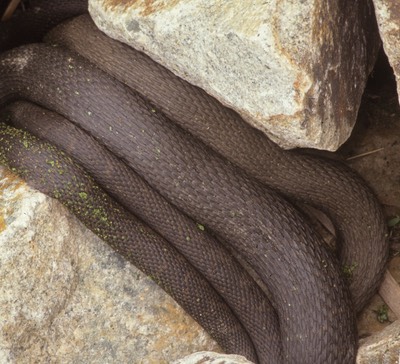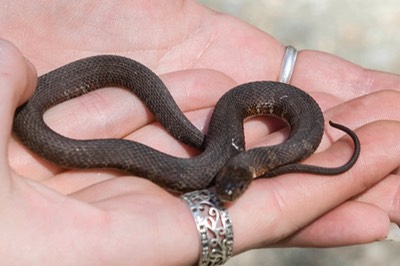
Watersnake. Unusually strong patterned adult
The long, thick-bodied Watersnakes of Western Massachusetts are equal to Milksnakes as the target of attack and misidentification. Many folks think we have “water moccasins” here; we don’t. Take a look at the Virginia Herp Society Website where you’ll see that water moccasin populations never reach further north than southeastern Virginia.
Widespread throughout the region, Watersnake populations seem to dwindle from central Berkshire County north, though there have not been any surveys of the Hoosic River watershed. Common in extensive marshes, bogs, reservoirs, and lakes, watersnakes have benefited from the resurgence of beavers since their reintroduction beginning in the 1930s. These big snakes often bask on beaver lodges and probably overwinter there. Watersnakes winter underwater, too, and have been seen to be somewhat active in wells during winter months.
They are found at all elevations in Western Massachusetts, though I’ve not recorded them at the pond near the summit of Greylock. Watersnakes are common, still, in Hilltown bogs and wetlands, where people who fish regularly encounter them.
In May, males actively search for females and patrol pond edges where they appear to be tracking pheromones produced by females. It’s not clear what kind of male-male interactions occur, but someone will someday discover this by spending a lot of time watching Watersnakes on a spring afternoon.
Some years ago, I received a note and photos from a woman who had “tamed” her backyard Watersnakes. While she sat in her lounge chair, they crawled up to her for handouts of thawed sardines, bought especially for them. Way cool and weird at the same time!
If you really like Watersnakes (and who doesn’t?), get a copy of North American Watersnakes - A Natural History by Whit Gibbons and Mike Dorcas.

Watersnake - typical adult pattern



